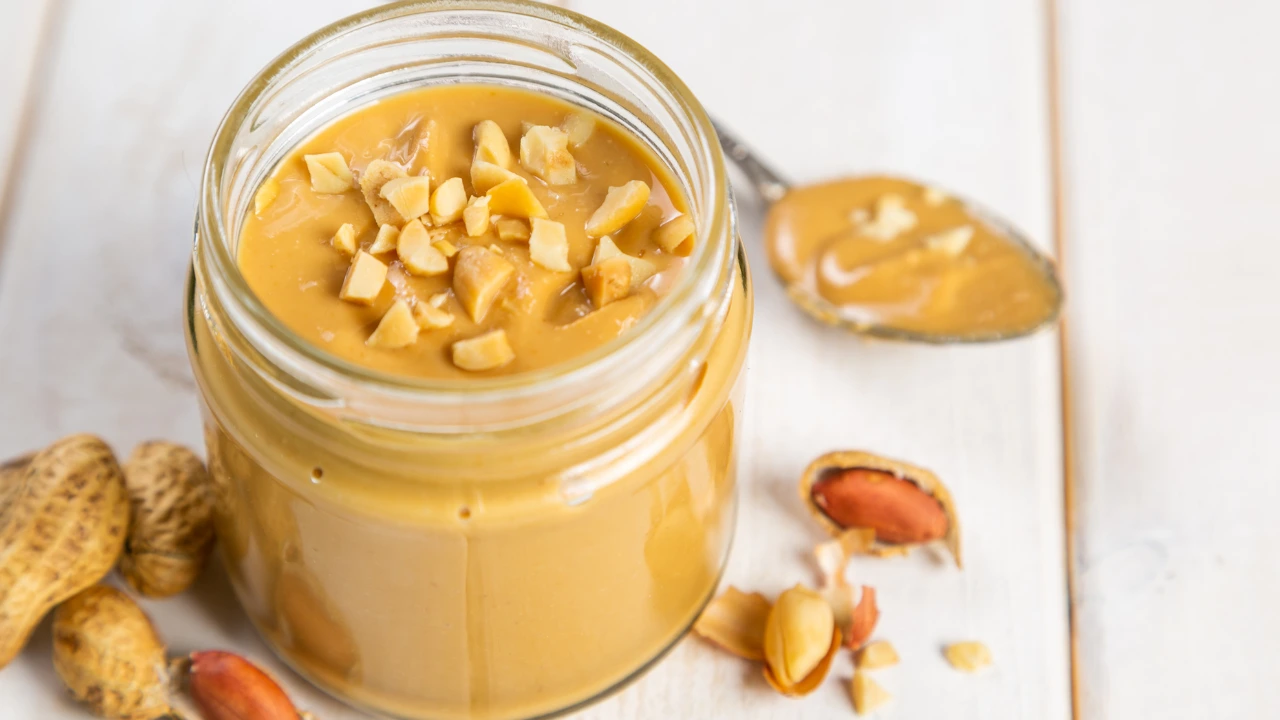
IN THIS ARTICLE
- Is peanut butter healthy for babies?
- Can babies be allergic to peanut butter?
- How to serve peanut butter to your baby
When you can give your baby peanut butter depends on whether your baby is at risk for a peanut allergy.
In the past, pediatricians advised parents to wait to give their babies peanut butter and other allergenic foods, hoping to reduce the risk of an allergic reaction. That advice has changed – experts now believe introducing potentially allergenic foods (peanuts especially) early can prevent an allergy.
If your baby has a history of severe, persistent eczema or has had an immediate allergic reaction to another kind of food, they’re at a higher risk of being allergic to peanuts. Talk to your baby’s doctor if this is the case to figure out how to best introduce it. They may advise you to give it to your baby as early as 4 to 6 months old.
If there isn’t reason to be concerned about food allergies in your baby, it’s best to wait to give them peanut butter (and other potentially allergenic foods) until you’ve introduced other basic baby foods, like baby cereal and pureed fruits and vegetables. If they handle low-allergy first foods well, you can expand your baby’s diet to include a broader range of healthy foods.
Once your baby is able to have peanut butter, experts recommend serving two teaspoons of peanut products to your baby three or more times per week to help prevent a peanut allergy.
Is peanut butter healthy for babies?
It is a nutritious addition to your baby’s diet: It’s rich in vitamin E, magnesium, and iron, and also has protein and filling fats – all vital nutrients for your growing baby.
Other popular nut butters, like almond butter and sun butter (made from sunflower seeds), have similar nutritional value, making them a great alternative if your baby has a peanut allergy. (And if your child goes to a nut-free daycare, sun butter may be allowed.)
Take care to avoid added sugars, though – chocolate-hazelnut spreads and cookie butters are popular, but don’t have the same nutritional value as nut butters.
Many kinds of peanut butter also have added sugar and salt, which babies don’t need. Check the label before you buy a jar of peanut butter to be sure it doesn’t have those. Babies younger than a year old also can’t safely eat honey, so avoid peanut butter that has honey in it.
Can babies be allergic to peanut butter?
Peanuts are a top allergen: Research suggests that around 1 to 2 percent of babies will experience a peanut allergy.
Whenever you’re feeding your baby a new food, serve it in the morning and give it to them for three to five days before serving another new food. It’s also best to give your baby new foods at home, rather than at a daycare or restaurant. That way, you can monitor your baby for a reaction and know what’s likely causing it.
Signs of a food allergy include hives, itchy skin rashes, swelling, nausea, vomiting, diarrhea, and change in skin color (pale or blue). If you notice any of these symptoms in your baby, let their doctor know.
If your baby has symptoms that involve multiple parts of the body (such as hives with vomiting or diarrhea), it could be an anaphylactic reaction and you should call emergency number go to an emergency room right away. Other signs of an anaphylactic reaction are throat tightness, breathing problems, wheezing, lightheadedness, pale/blue skin, and loss of consciousness.
Tree nut allergies aren’t as common as peanut allergies, but they’re still among the top childhood allergens. If you’re avoiding peanut butter because of an allergy and giving your baby almond or cashew butter instead, keep an eye out for the same symptoms mentioned above.
How to serve peanut butter to your baby
Once your baby’s ready for it, you can serve it by mixing two teaspoons of smooth peanut butter with two to three tablespoons of prepared baby cereal, yogurt, or fruit or vegetable puree. Or, you can mix two teaspoons of peanut butter powder or peanut flour with two to three tablespoons of fruit or vegetable puree.
You can also dissolve peanut butter puffs into some breast milk, formula, or water and feed it to your baby with a spoon.
Once your baby is older and ready for finger foods (usually around 8 to 10 months), you can spread a thin layer of peanut butter (or another nut butter) on toast, then cut the toast into bite-size pieces before serving it.
When giving your baby peanut butter or other nut butters, avoid serving it in large globs, since that can be difficult for your baby to chew and swallow. Don’t give babies crunchy peanut butter, either, since it’s a choking hazard.


Add a Comment